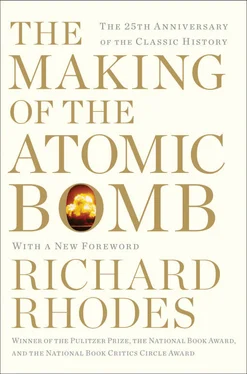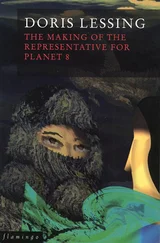The Austro-Hungarian Dual Monarchy collapsed in November. Austrian novelist Robert Musil explained that collapse as well as anybody in a dry epitaph: Es ist passiert (“It sort of happened”). 409Hungary won a new government on October 31 and ecstatic crowds filled the streets of Budapest waving chrysanthemums, which had become the symbol of the revolution, and cheering the truckloads of soldiers and workers that pushed through.
The victory was not easy after all. The revolution hardly extended beyond Budapest. The new government was unable to negotiate anything better than a national dismembering. The founding of the Republic of Hungary, proclaimed on November 16, 1918, was shadowed by another founding on November 20: of the Hungarian Communist Party, by soldiers returning from Russian camps where they had been radicalized as prisoners of war. On March 21, 1919, four months after it began, the Republic of Hungary bloodlessly metamorphosed into the Hungarian Soviet Republic, its head a former prisoner of war, disciple of Lenin, journalist, Jew born in the Carpathians of Transylvania: Béla Kun. Arthur Koestler, a boy of fourteen then in Budapest, heard for the first time “the rousing tunes of the Marseillaise and of the Internationale which, during the hundred days of the Commune, drowned the music-loving town on the Danube in a fiery, melodious flood.” 410
It was a little more than a hundred days: 133. They were days of confusion, hope, fear, comic ineptitude and some violence. Toward the end of the war von Kármán had returned to Budapest from aeronautics work with the Austro-Hungarian Air Force, where he had participated in the development of an early prototype of the helicopter. De Hevesy had also returned. Von Kármán helped reorganize and modernize the university in the brief days of the Republic and even served as undersecretary for universities during the Kun regime. He remembered its naïveté more than its violence: “So far as I can recall, there was no terrorism in Budapest during the one hundred days of the Bolsheviks, although I did hear of some sadistic excesses.” 411Lacking a qualified physicist, the university hired de Hevesy as a lecturer on experimental physics during the winter of 1918–19. Undersecretary von Kármán appointed him to a newly established professorship of physical chemistry in March, but de Hevesy found Commune working conditions unsatisfactory and went off in May to Denmark to visit Bohr. The two old friends agreed he would join Bohr’s new institute in Copenhagen as soon as it was built.
Arthur Koestler remembers that food was scarce, especially if you tried to buy it with the regime’s ration cards and nearly worthless paper money, but for some reason the same paper would purchase an abundance of Commune-sponsored vanilla ice cream, which his family therefore consumed for breakfast, lunch and dinner. He mentions this curiosity, he remarks, “because it was typical of the happy-go-lucky, dilettantish, and even surrealistic ways in which the Commune was run.” It was, Koestler thought, “all rather endearing—at least when compared to the lunacy and savagery which was to descend upon Europe in years to come.” 412
The Hungarian Soviet Republic affected von Neumann and Teller far more severely. They were not admirers like young Koestler nor yet members of the intellectual elite like de Hevesy and von Kármán. They were children of businessmen—Max Teller was a prosperous attorney. Max von Neumann took his family and fled to Vienna. “We left Hungary,” his son testified many years later, “very soon after the Communists seized power…. We left essentially as soon as it was feasible, which was about 30 or 40 days later, and we returned about 2 months after the Communists had been put down.” 413In Vienna the elder von Neumann joined the group of Hungarian financiers working with the conservative nobility to overthrow the Commune. 414
Lacking protective wealth, the Tellers stuck it out grimly in Budapest, living with their fears. They made forays into the country to barter with the peasants for food. Teller heard of corpses hung from lampposts, though as with von Kármán’s “sadistic excesses” he witnessed none himself. 415Faced with an overcrowded city, the Commune had socialized all housing. The day came for the Koestlers as for the Tellers when soldiers charged with requisitioning bourgeois excesses of floor space and furniture knocked on their doors. The Koestlers, who occupied two threadbare rooms in a boarding house, were allowed to keep what they had, Arthur discovering in the meantime that working people were interesting and different. The Tellers acquired two soldiers who slept on couches in Max Teller’s two office rooms, connected to the Teller apartment. 416The soldiers were courteous; they sometimes shared their food; they urinated on the rubber plant; but because they searched for hoarded money (which was safely stashed in the cover linings of Max Teller’s law books) or simply because the Tellers felt generally insecure, their alien presence terrified.
Yet it was not finally Hungarian communism that frightened Edward Teller’s parents most. The leaders of the Commune and many among its officials were Jewish—necessarily, since the only intelligentsia Hungary had evolved up to that time was Jewish. Max Teller warned his son that anti-Semitism was coming. Teller’s mother expressed her fears more vividly. “I shiver at what my people are doing,” she told her son’s governess in the heyday of the Commune. 417“When this is over there will be a terrible revenge.”
In the summer of 1919, as the Commune faltered, eleven-year-old Edward and his older sister Emmi were packed off to safety at their maternal grandparents’ home in Rumania. They returned in the autumn; by then Admiral Nicholas Horthy had ridden into Budapest on a white horse behind a new national army to install a violent fascist regime, the first in Europe. The Red Terror had come and gone, resulting in some five hundred deaths by execution. 418The White Terror of the Horthy regime was of another order of magnitude: at least 5,000 deaths and many of those sadistic; secret torture chambers; a selective but unrelenting anti-Semitism that drove tens of thousands of Jews into exile. 419A contemporary observer, a socialist equally biased against either extreme, wrote that he had “no desire whatever to palliate the brutalities and atrocities of the proletarian dictatorship; its harshness is not to be denied, even if its terrorists operated more with insults and threats than with actual deeds. But the tremendous difference between the Red and the White Terror is beyond all question.” 420A friend of the new regime, Max von Neumann brought his family home.
In 1920 the Horthy regime introduced a numerus clausus law restricting university admission which required “that the comparative numbers of the entrants correspond as nearly as possible to the relative population of the various races or nationalities.” 421The law, which would limit Jewish admissions to 5 percent, a drastic reduction, was deliberately anti-Semitic. Though he was admitted to the University of Budapest and might have stayed, von Neumann chose instead to leave Hungary at seventeen, in 1921, for Berlin, where he came under the influence of Fritz Haber and studied first for a chemical engineering degree, awarded at the Technical Institute of Zürich in 1925. A year later he picked up a Ph.D. summa cum laude in mathematics at Budapest; in 1927 he became a Privatdozent at the University of Berlin; in 1929, at twenty-five, he was invited to lecture at Princeton. He was professor of mathematics at Princeton by 1931 and accepted lifetime appointment to the Institute for Advanced Study in 1933.
Von Neumann experienced no personal violence in Hungary, only upheaval and whatever anxiety his parents communicated. He nevertheless felt himself scarred. His discussion with Stanislaw Ulam went on more ominously from identifying Carpathian villages as the ultimate places of origin of Hungary’s talented expatriates. “It will be left to historians of science,” Ulam writes, “to discover and explain the conditions which catalyzed the emergence of so many brilliant individuals from that area…. Johnny used to say that it was a coincidence of some cultural factors which he could not make precise: an external pressure on the whole society of this part of Central Europe, a feeling of extreme insecurity in the individuals, and the necessity to produce the unusual or else face extinction.” 422
Читать дальше












